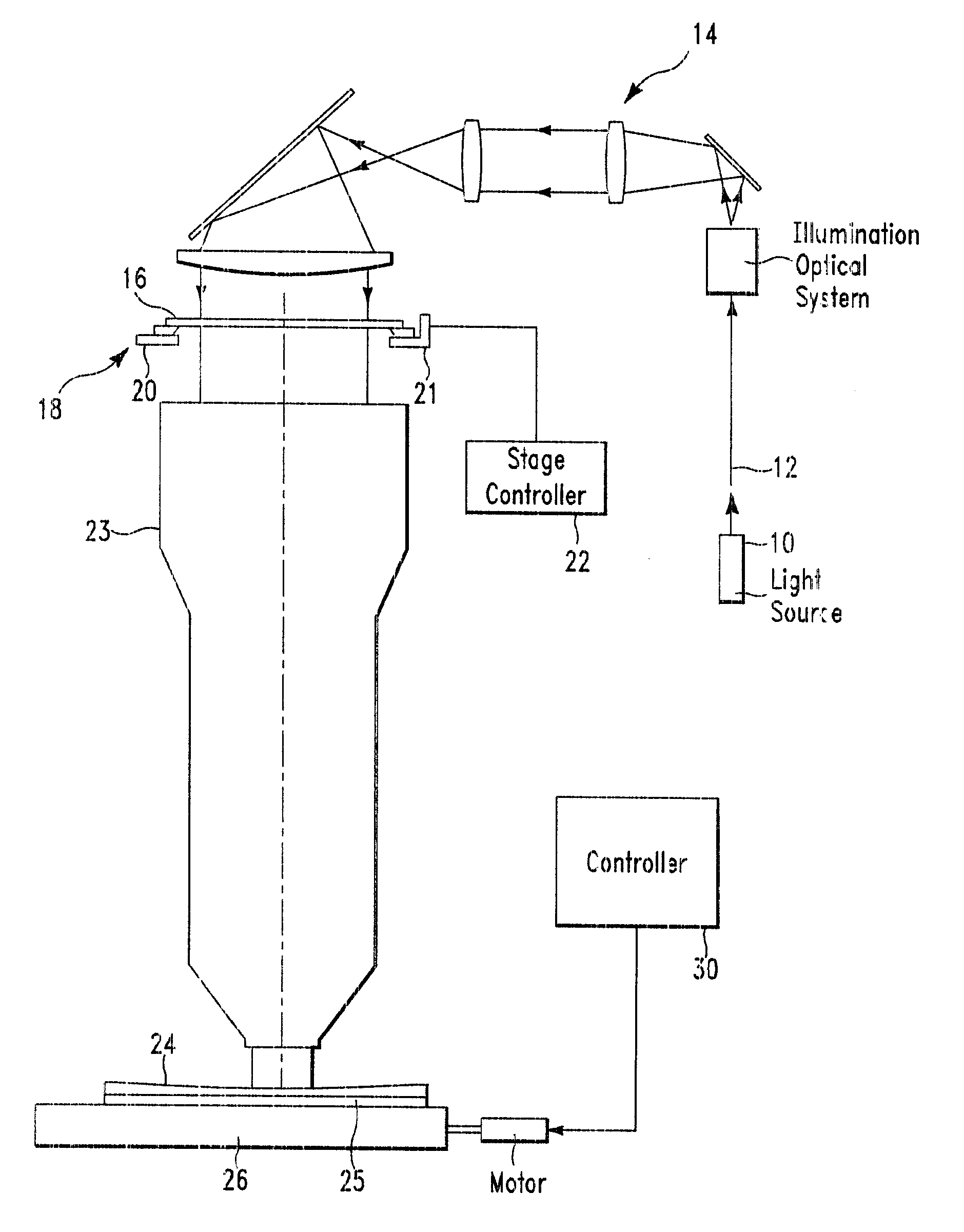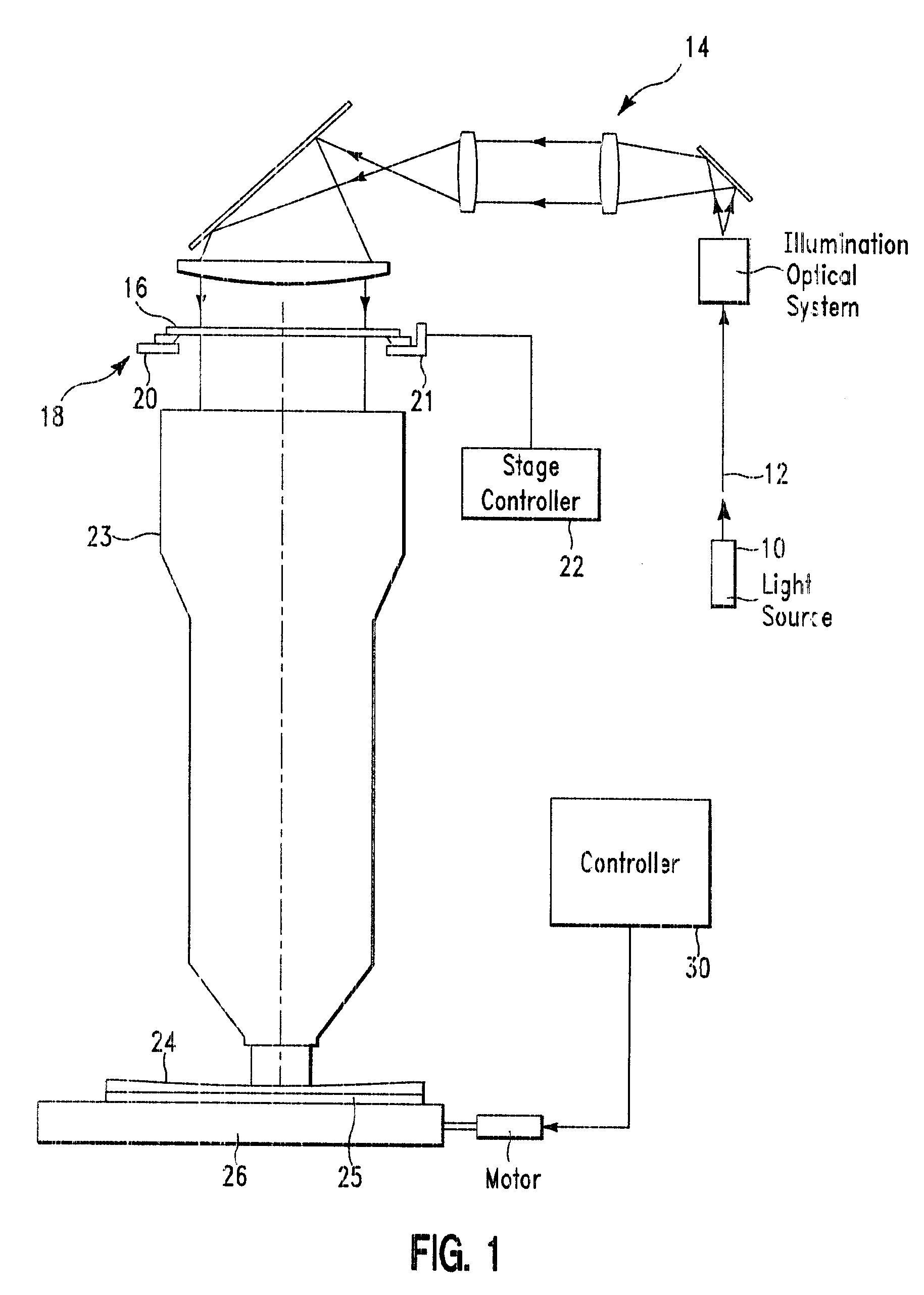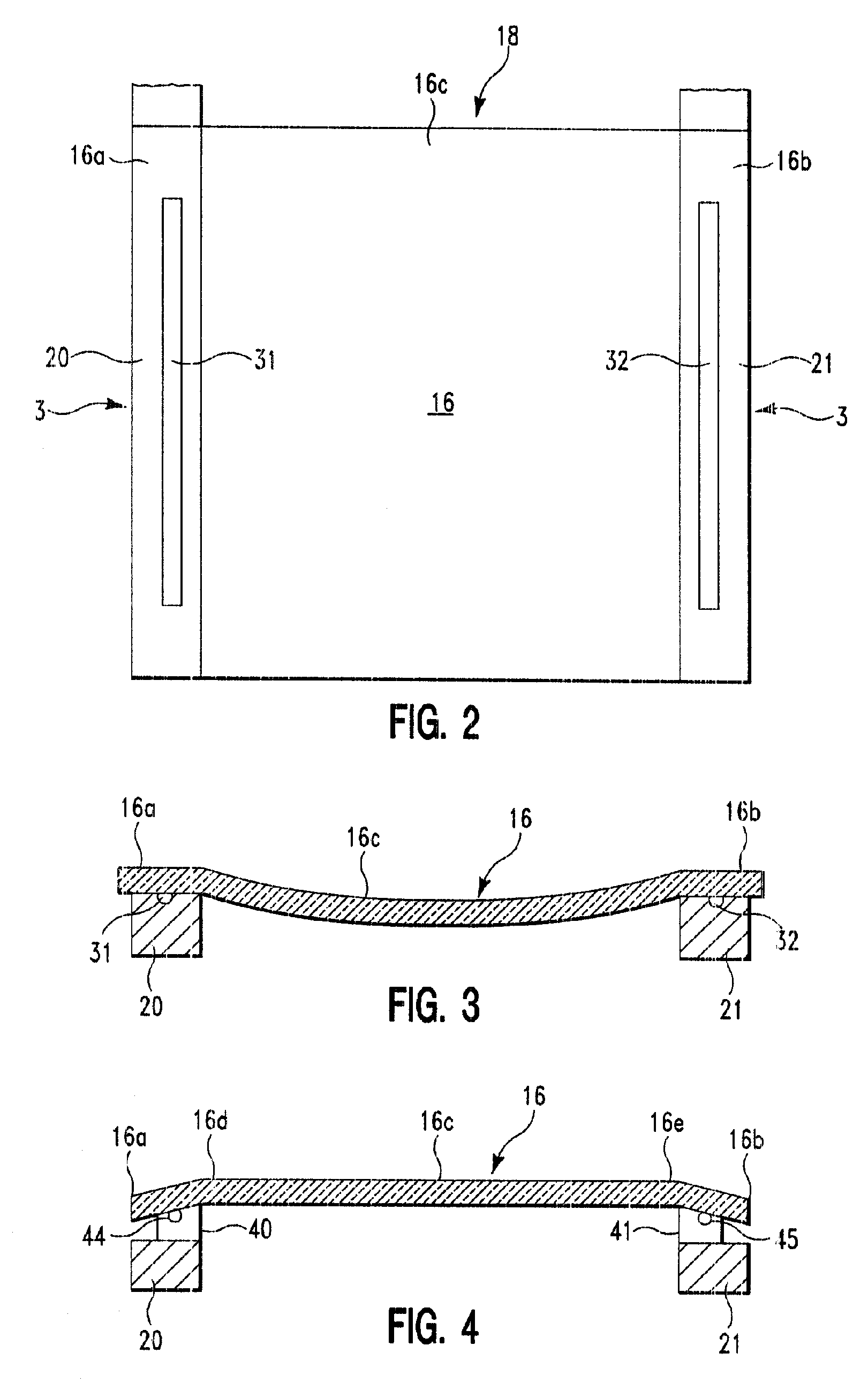A method and apparatus for correcting gravitational sag in photomasks used in the production of electronic devices
a technology of electronic devices and photomasks, applied in the field of optical lithography devices, can solve the problems of affecting so as to achieve the effect of improving the quality of optical lithography, better devices being produced in the wafer, and reducing the size of optical lithography masks
- Summary
- Abstract
- Description
- Claims
- Application Information
AI Technical Summary
Benefits of technology
Problems solved by technology
Method used
Image
Examples
first embodiment
[0030] Turning now to FIG. 4, 5, and 6, the present invention will be described. FIG. 4 is a cross-sectional view of a glass mask 16 having one edge 16a secured to the mask support arm 20 via a respective rigid, parallel, mask holding or chucking bar 40 and its opposite edge 16b secured to the mask support arm 21 via a respective rigid, parallel, mask holding or chucking bar 41. In accordance with the present invention, the chucking bars 40 and 41 are designed such that each will securely hold a respective mask edge 16a, 16b such the center 16c of the mask is supported there between. Each bar 40 and 41 has a top surface designed to securely hold down and apply a bending force on each respective edge 16a and 16b which forces are transmitted to the mask such that any gravitational induced sag in the mask center 16c is reduced, minimized, or substantially eliminated. The present invention achieves this result by providing the chucking bars 40 and 41, supporting the separated edges 16a ...
second embodiment
[0034]FIG. 7 is a perspective view of the present invention wherein each stage arm is adapted to support a rotary chucking bar. In this embodiment each of the stage arms 20, 21, shown in FIG. 6, are identical and each has affixed, at each end, vertical chucking bar supports 51 and 52. Thus, as shown in this FIG. 7 a first vertical support 51 is affixed at a first end 20a of the stage arm 20 and a second vertical support 52 is affixed at the second or opposite end 20b of the arm 20. A chucking bar 53, that can be rotated, is now supported between the vertical supports 51 and 52 by pivot pins 54 and 55 that respectively extend from the vertical supports 51 and 52. These pivot pins 54 and 55 extend into the ends 53a and 53b of the chucking bar 53. The central portion 53c of chucking bar 53 is provided with a vacuum groove 56 that is coupled to a vacuum source 57 via a flexible line 58. Affixed to one of the vertical supports, e.g. vertical support 52 and coupled to the chucking bar 53 ...
third embodiment
[0036] FIGS. 8 is perspective view of the present invention and shows a stage arm 60 that can be substituted for either stage arm 20 or 21 shown in FIG. 2 and FIG. 9 is top planar view of the surface of the stage arm 60. The stage arm 60 is essentially comprised of a main body 61 which has a cantilevered plate 62 fixedly attached to and overlying its upper surface 63. This plate 62 has a free, i.e. cantilevered edge 62a and a fixed edge 62b and further has on its upper surface 64 a vacuum groove 66 that is coupled to a vacuum source 57 via a flexible line 58 by which a mask edge can be secured to the surface of the cantilevered plate 62. The fixed edge 62b of the cantilevered plate 62 is secured to underlying body 61 by a thin, flexible, support rib 67. The body 61 is provided with a plurality of drive devices 68 positioned beneath the plate 62 which can raise or lower the free cantilevered edge 62a as needed to bend or flex a respective mask edge secured thereon as taught above. Th...
PUM
 Login to View More
Login to View More Abstract
Description
Claims
Application Information
 Login to View More
Login to View More - R&D
- Intellectual Property
- Life Sciences
- Materials
- Tech Scout
- Unparalleled Data Quality
- Higher Quality Content
- 60% Fewer Hallucinations
Browse by: Latest US Patents, China's latest patents, Technical Efficacy Thesaurus, Application Domain, Technology Topic, Popular Technical Reports.
© 2025 PatSnap. All rights reserved.Legal|Privacy policy|Modern Slavery Act Transparency Statement|Sitemap|About US| Contact US: help@patsnap.com



